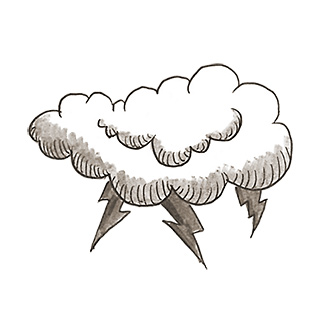
Related Questions
- How can a snail crawl upside-down on the underside of the surface of a pond?
- Is there a way to check a building for structural damage without knocking down walls?
- Why does structural behavior change in different types of soil?
- How does glass change over time?
- Are there materials that can absorb heat without becoming hot?
- Why do plastics get brittle when they get cold?
- How does a match burn in a spacecraft?
- Can we safely burn used plastic objects in a domestic fireplace?
- Does hot water freeze faster than cold water?
- Why doesn’t a plain, white piece of paper reflect light, but a mirror does?
Is fire a solid, a liquid, or a gas?
Come on baby, light my mixture of incandescent gases…
By Sarah JensenClassical Western philosophers divided the world into four elements: earth, water, air, and fire. Early Babylonian astrologers thought so highly of their classification that they assigned one of the elements to each house of the zodiac, designating Aries, Leo, and Sagittarius as fire signs whose members — like their ruling element — were prone to the occasional flare-up.
Though we now recognize not four but 118 elements, the ancients were onto something. “Their system corresponds more or less to our modern concepts of matter: solids, liquids, and gases,” says Jiahao Chen, a postdoctoral associate in chemistry at MIT. “But fire is something else altogether. It is a chemical reaction that happens in a mixture of gases.”
Simply defined, fire is a chemical reaction in a mixture of incandescent gases, typically luminous with intense heat. But candle flames, wood fires, and propane fires aren’t created equal. “What constitutes fire depends on the fuel being burned,” says Chen. “The chemistry of each type of fire is different.” They’re similar to the extent that all fires release energy stored in fuels, and if supplied with enough oxygen and enough time, eventually produce carbon dioxide and water. “That’s the end game,” says Chen. “You can’t get more energy out of it without putting more energy in. All fires eventually burn themselves out, unlike solids, liquids, and gases, which can exist indefinitely in the same state.”
Most of fire’s energy output is in the form of heat. As the gas mixture warms, it also rises and gives the flame its familiar teardrop taper. “A flame holds its shape because chemical reactions happen at different places,” explains Chen. “Imagine the pocket of fuel coming out from a gas burner on the stove,” he suggests. “The only place combustion can happen is at the interface where fuel and oxygen meet. The fire starts at that boundary, and then reaches a steady state: the rate of oxygen entering the mixture, the rate of gas entering the mixture, and the rate of the CO2 and water vapor being emitted stay the same.”
Science has come a long way since the early metaphysicists’ attempts to define matter, but the exact nature of fire is not yet completely understood. The unknowns provide atmospheric chemists and engineers research opportunities to isolate the precise chemical processes involved in combustion — and the prospect of impacting the economy and the environment. “Many automobile companies employ scientists who specialize in the study of how vehicle engines burn fuel,” says Chen. “Discovering exactly what happens during combustion could lead to improved efficiency and a cleaner burning processes.”
Thanks, Frimpong Apenteng Baidoo of Accra for this question.
Posted: March 05, 2013